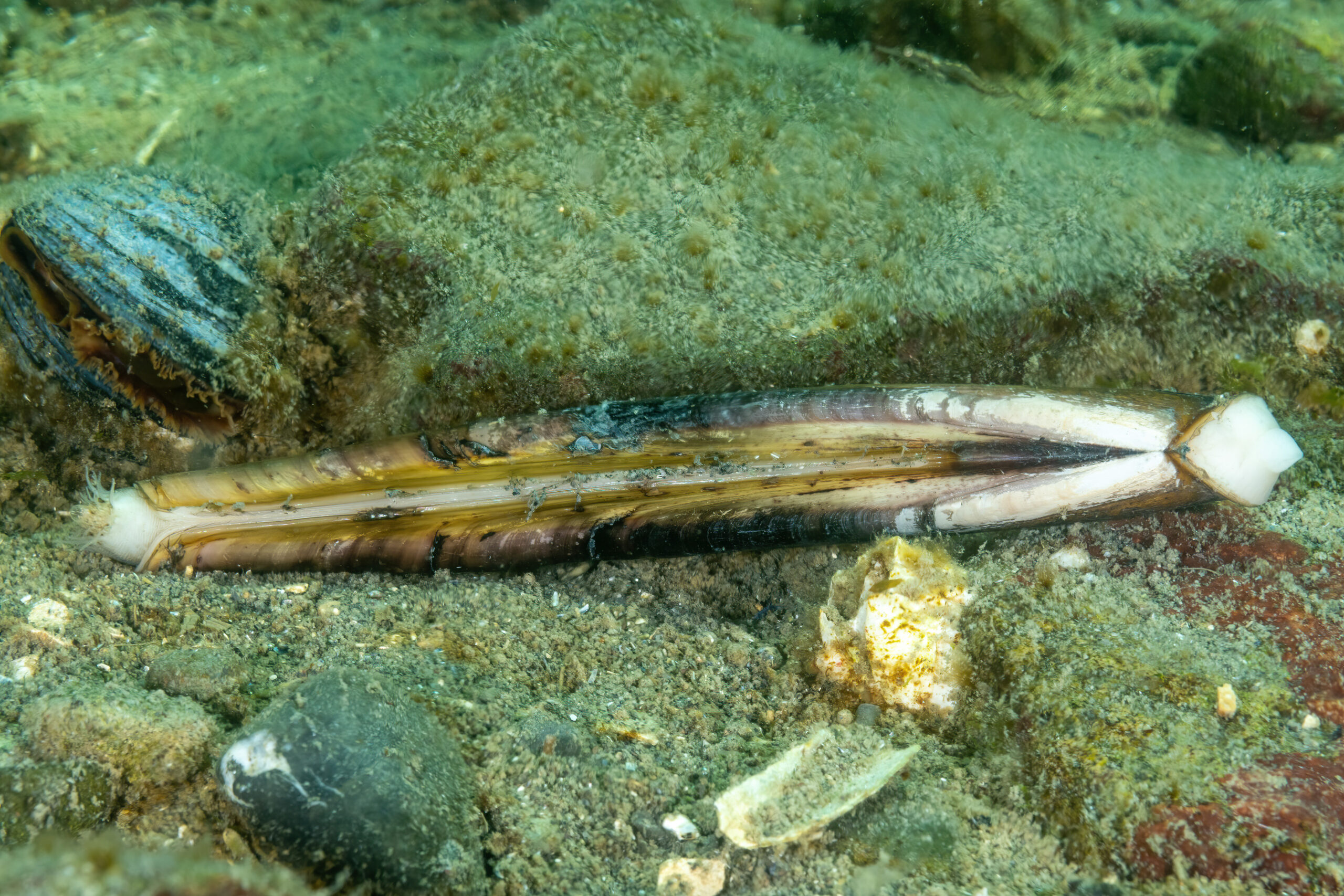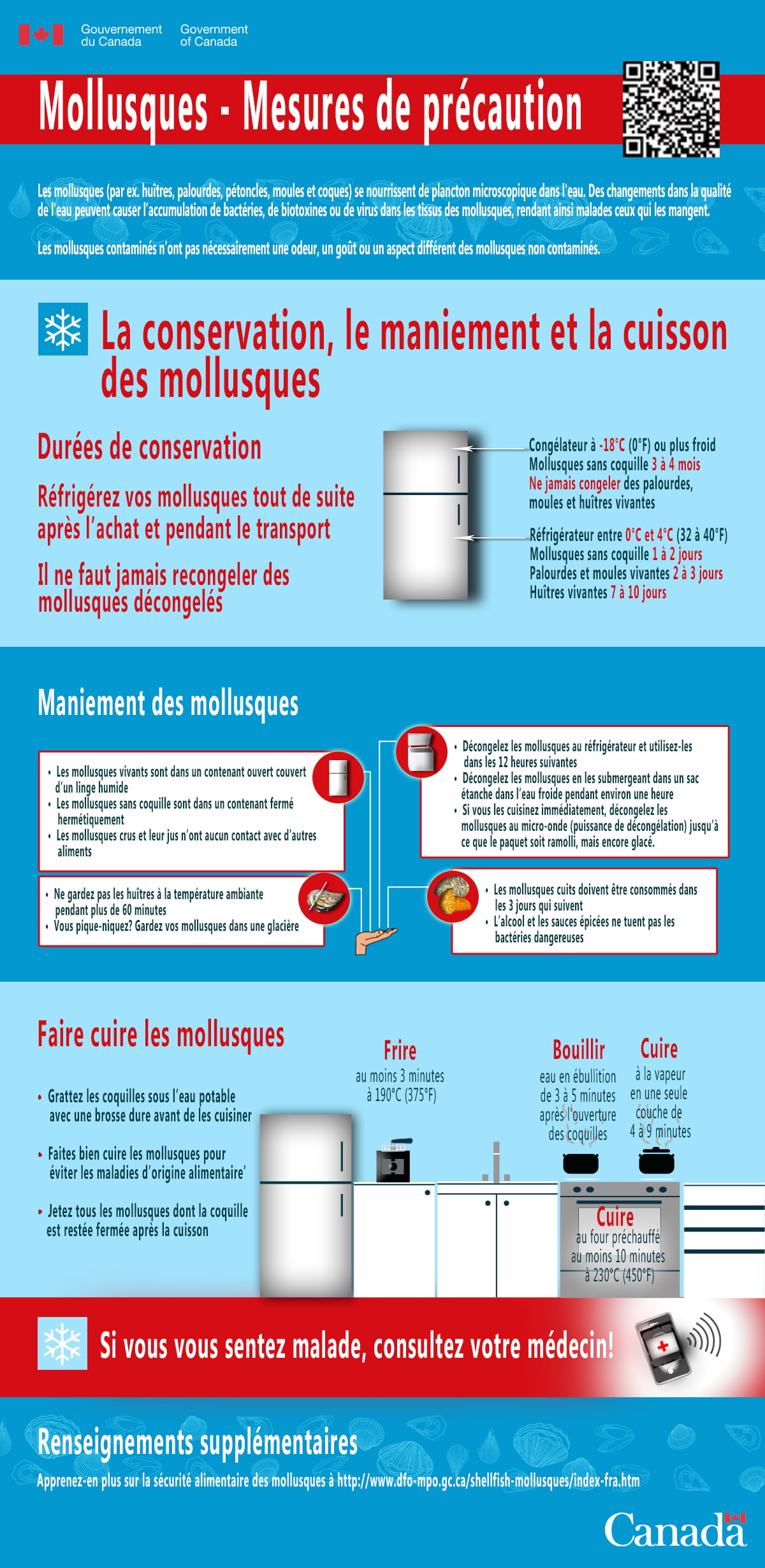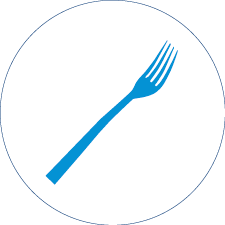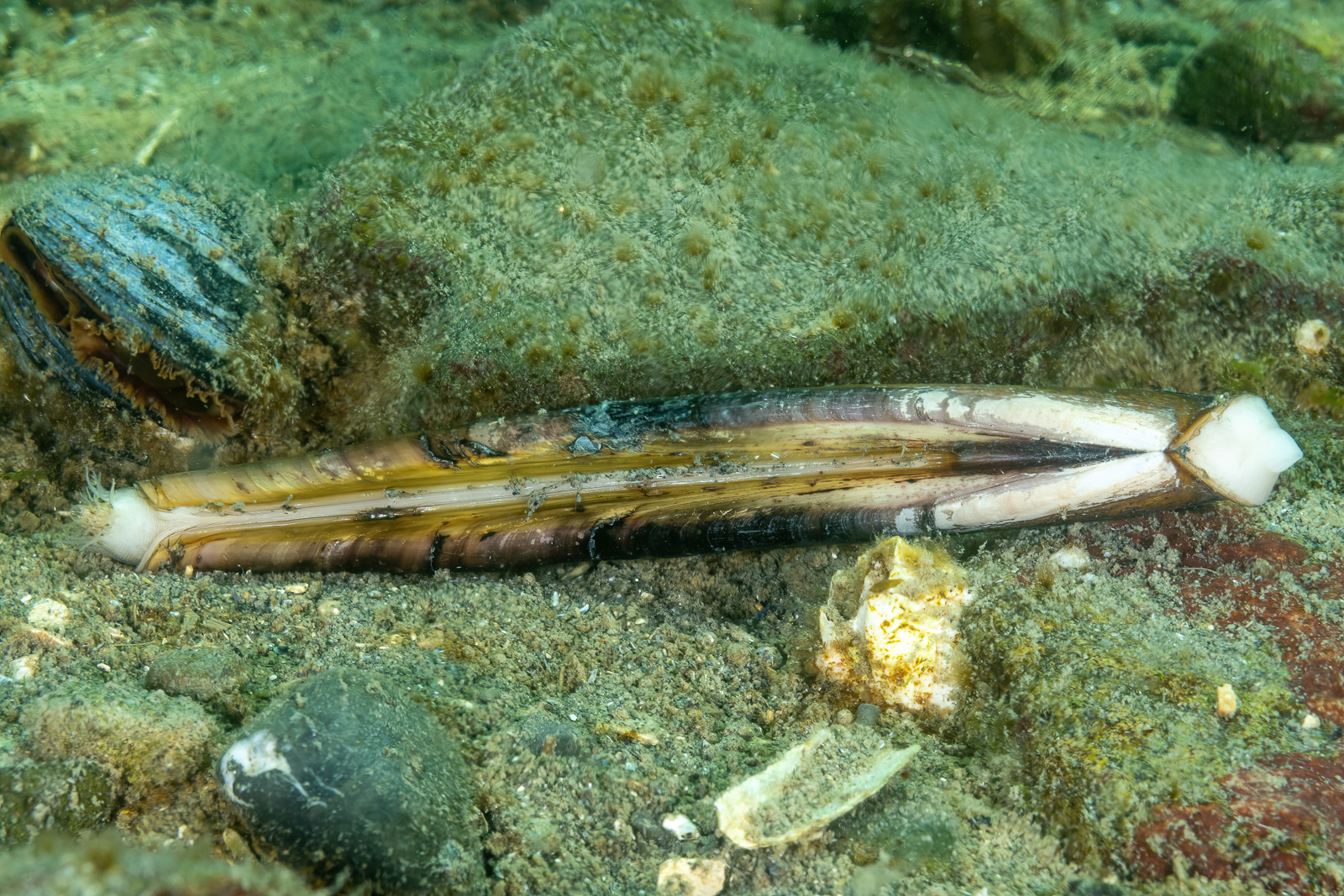
SIZE:
Up to 25 cm.
LIFE EXPECTANCY:
Approximately 10 years.
LIFE CYCLE:
Males and females release their reproductive cells at the same time, around June and July, and fertilization takes place in the water. The eggs produce larvae, which become part of the plankton. After a few weeks, depending on the water temperature, the larvae transform into juveniles and move to the bottom. They will reach a size of 10 cm in three or four years.
The shell of the Atlantic razor clam looks like an old barber’s knife: slightly arched, with a length five to eight times its width. The two valves are identical in size but asymmetrical. Its colour ranges from greyish marbled with cream to brown and mauve. The shell is covered with an olive green to brown coating, which crumbles when it dries.
Equipped with two siphons at one end for feeding and breathing, it also has a powerful foot at the other. This enables it to bury itself very quickly and also move around.
Coastal zone, at low tide, down to 35 m depth.
Atlantic razor clam live vertically buried in sand or mud, often in colonies called beds. Razor clams bury themselves up to 50 cm below the surface of the seabed. However, they are not completely sedentary. They can even swim and jump.

Atlantic razor clams prefer sandy bottoms in which they can bury themselves.
Credit: Richard Larocque, photo taken at Les Méchins, at a depth of 3 m.
PREYS:
Plankton
PREDATORS:
Seabirds
Marine worms
MACHINES:
Hydraulic dredge.
REGULATIONS:
- Specified fishing season
- Minimum size of 100 mm
- Quotas
- Regulated fishing gear
Recreational harvesting is authorized in the Gaspé Peninsula and Magdalen Islands. A daily maximum of 300 razor clams is authorized.
Recreational harvesting? Yes, but only under certain conditions.
Atlantic razor clams can be hand-harvested recreationally. However, molluscs can be toxic. Be sure to find out about harvesting conditions and whether your area is open. This information can be found on the Fisheries and Oceans Canada website.
Atlantic razor clam is a Smarter seafood–listed species.
BENEFITS:
The Atlantic razor clam is rich in protein, iron and zinc.
LET’S COOK:
Meaty, tender texture. Fine and slightly sweet taste with hints of almond.
Atlantic razor clams are generally sold fresh or canned. They can be baked, fried, steamed or cooked in broth.
OUR CULINARY ADVICE:
- Do not overcook. The meat hardens and becomes rubbery when overcooked.

To avoid poisoning, it's important to always follow safe shellfish storage, handling and cooking practices.
Source: DFO






